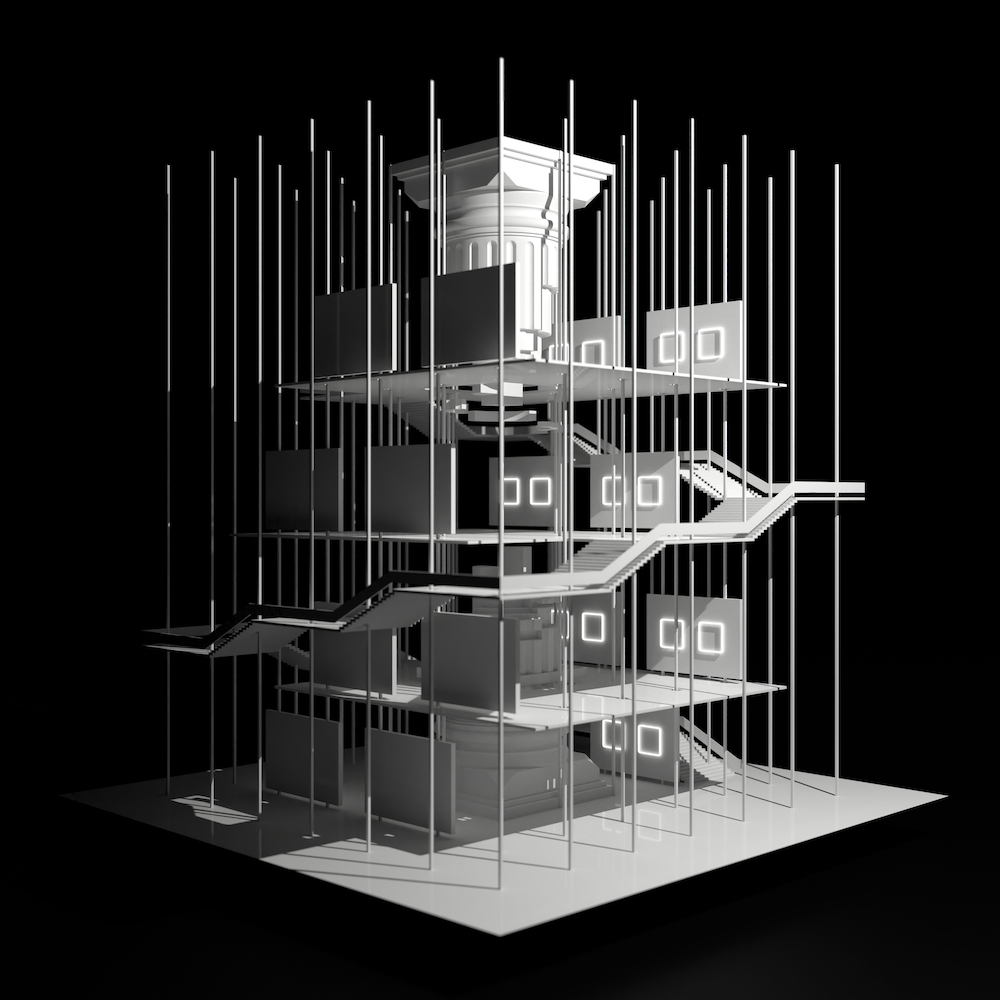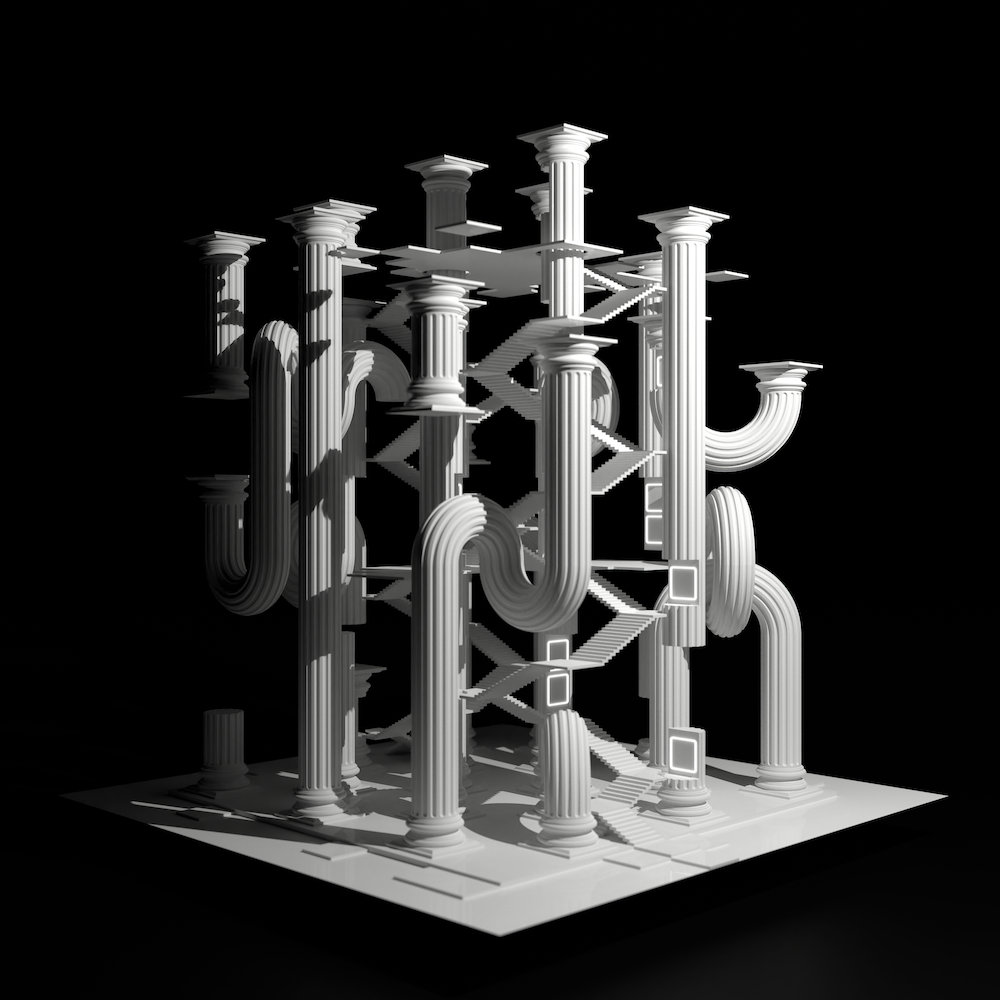In early 2020, just before the COVID-19 pandemic and subsequent explosion of the market for NFTs, Colborn Bell bought his first pieces of crypto art. Those works would become the foundation of the collection for the Museum of Crypto Art (MoCA), now the pioneering nonprofit institution in the space. Bell was inspired by both the possibilities of the metaverse and real-world places like Inhotim in Brazil, which have the ability to upend the way we interact, experience, and consider art. At the heart of MoCA is the Genesis Collection, described as a “time capsule for the metaverse and its travelers,” with 300 works by 300 artists, including names like Olive Allen, Pak, Trevor Jones, Obvious, XCOPY, and Beeple.
Bell envisions people using the art from the museum as a global public good, incentivizing its members through Discord channels, $MoCA coin, community collections curated by users, and now MoCA ROOMs, offering customizable architecture to host exhibitions of one’s own making accessed via their app.
 Shivani Mitra, portrait by Dave Krugman.
Shivani Mitra, portrait by Dave Krugman.
The museum’s curator and director, Shivani Mitra, joined in July of 2020, interested in what it meant to be a digital native institution and eager to be involved in this whole new art movement. “Everything we do, we do in the spirit of decentralization,” she told Whitewall recently. “I feel so strongly about cryptocurrency as a new way for people to be free.” In our conversation, Mitra shared more about creating a decentralized museum collection.
WHITEWALL: There are models for real-world museums and institutions. But here you can totally throw that away and start from scratch. What did you want to create?
SHIVANI MITRA: The traditional art world has become a market that is manipulated, that is guarded. Museums are incredible organizations, but they have also been part of a very heavy manipulation of historical rewriting.
We wanted to be radically inclusive and less top-down—more bottom-up. We made a very distinct decision in early 2021 to bring five Ethereum developers into the museum. That is probably the most actionable thing we could have done to demonstrate to people that we are interested in something else other than an institution where a couple of people on top decide.
 MOCA ROOM, a 1/1 architectural object that can be installed across Metaverse apps. The customizable NFT with embedded slots that display any artwork activated on the Museum of Crypto Art app decentralizes the curation of the museum and democratizes its Metaverse presence.
MOCA ROOM, a 1/1 architectural object that can be installed across Metaverse apps. The customizable NFT with embedded slots that display any artwork activated on the Museum of Crypto Art app decentralizes the curation of the museum and democratizes its Metaverse presence.
WW: What did they bring to the table?
SM: They’ve been building our decentralized application. We have the Genesis Collection, which is 300 artworks now, by 300 different artists, just to recognize the first pioneers of this space. But we also have a community collection that the developers have built the text stack for. Basically, anyone who has an Ethereum wallet address, and has collected a certain number of NFTs, can enter app.museumofcryptoart.com, create a member profile for free, and their collection into the museum. This collection is almost 7,200 artworks now from almost 3,400 users. We’ve created a decentralized collection of artwork.
We have created everything with open source, public good, and technology in mind. They have built a forum where people can discuss, like an art archive forum. They have also built this technology called ROOM, which is an inter-operable piece of architecture that you can drop into any virtual world of your choice. You can own a room of the museum. This way, even our exhibitions are going to get decentralized. That is probably how we are very different from any other institution.
WW: How would you describe the community of the Museum of Crypto Art and how it incentivizes collaboration?
SM: The community is art-focused—artists, curators, collectors, developers, traders turned art patrons. If I am a user and I “activate” artwork into the community collection, let’s say five generative artworks, then I can go to a leaderboard and click on other users and find who has collected that same artist, or I can search that artist and find out who the other collectors are. On OpenSea that is nearly impossible to do. We have created a way for people who have an interest in collecting to find each other, depending on what they have collected.
 MOCA ROOM, a 1/1 architectural object that can be installed across Metaverse apps. The customizable NFT with embedded slots that display any artwork activated on the Museum of Crypto Art app decentralizes the curation of the museum and democratizes its Metaverse presence.
MOCA ROOM, a 1/1 architectural object that can be installed across Metaverse apps. The customizable NFT with embedded slots that display any artwork activated on the Museum of Crypto Art app decentralizes the curation of the museum and democratizes its Metaverse presence.
WW: How else do you hope to change the way people engage with art via the museum?
SM: We are working on an artificially intelligent curator. We have a writer that has been doing about 2,000 words per artwork on the Genesis Collection. There is an artist on our team who has been creating a model where you can input the text we have, and the images we have, and build a crypto art encyclopedia. What we would like to do is deploy it on our app. You enter our museum, you can talk with a chatbot, or, if you enter in VR, you can say, “I like this artwork, show me more. What is the oldest artwork you have?” We can start to have a really active archival synthetic being. That has been really fun to work on.












